Fresh Produce

Can you suggest any food markets that should not be missed when traveling ?
Food markets around the world offer a window into local culture and cuisine. Here are some must-visit food markets: 1\. Boqueria Market, Barcelona, Spain: Known for its fresh produce, seafood, and tapas bars. 2\. Grand Bazaar, Istanbul, Turkey: Offers Turkish delights, spices, and sweets. 3\. La Boqueria, Mexico City, Mexico: A feast for the senses with vibrant colors and aromatic smells. 4\. Kreta Ayer Wet Market, Singapore: Located in Chinatown and known for live seafood and Chinese herbs. 5\. Tsukiji Fish Market, Tokyo, Japan: Renowned for its early morning tuna auctions and seafood. 6\. Mercado de San Miguel, Madrid, Spain: Housed in a historic building with gourmet tapas and wines. 7\. Jemaa el-Fnaa Market, Marrakech, Morocco: A night market surrounded by food stalls offering Moroccan cuisine. 8\. Pike Place Market, Seattle, USA: Known for its fresh produce, artisanal foods, and local crafts. 9\. Queen Victoria Market, Melbourne, Australia: Offers a mix of fresh produce, gourmet foods, and international cuisine. 10\. Or Tor Kor Market, Bangkok, Thailand: Known for its fresh produce, street food, and local ingredients. These markets provide not only delicious food but also a chance to immerse oneself in the local culture.

How can I incorporate seasonal ingredients into my holiday cooking ?
Incorporating seasonal ingredients into your holiday cooking is not only a way to serve the freshest and most flavorful dishes but also supports local farmers and reduces the carbon footprint of your meal. Here are some tips on how to make the most of what's in season: 1. Know Your Seasonal Produce: Research local seasonality and consult seasonal produce guides to find out what fruits and vegetables are in season in your area. 2. Plan Your Menu Around Seasonal Ingredients: Choose one or two seasonal items as the stars of your dish, and build flavor profiles around them. 3. Visit Farmers Markets and CSAs: Support local farmers by shopping at farmers markets or joining a Community Supported Agriculture (CSA) program. Get inspired by the variety of seasonal produce available there. 4. Experiment with New Recipes: Try global cuisines that traditionally use seasonal ingredients, or adapt family favorites by swapping out non-seasonal ingredients for what's currently fresh. 5. Use Seasonal Ingredients Creatively: Swap out sides for in-season vegetables like parsnips, turnips, or sweet potatoes, and garnish with thinly sliced radishes, cucumbers, or even edible flowers for an extra pop of color and freshness. 6. Don't Forget About Meat and Dairy: Choose seasonal proteins like game meats in the fall and winter, and consider seafood that is in season for coastal holiday celebrations. Opt for local dairy products like cheeses which can have seasonal variations in taste and quality. 7. Preserve the Bounty: If you come across a great deal on seasonal produce, consider preserving it through canning, pickling, or freezing to enjoy later in the year.

Can sportswear companies produce more sustainable products ?
Sportswear companies can produce more sustainable products by using eco-friendly materials, reducing waste, and adopting circular economy principles.

Is there a way to cook scallops without overcooking them ?
Scallops are a delightful seafood option that many people enjoy for their tender, sweet flavor. However, they can easily be overcooked, turning rubbery and tough. Here's a guide to help you cook scallops to perfection: 1. Choose fresh scallops and pat them dry before cooking. Moisture is the enemy of a good sear. 2. Pan-searing is the most common method, but grilling and baking are also options. Cook scallops over medium-high heat until golden crust forms, then flip and cook for another minute or two. 3. Timing is key - don't walk away from the stove and check for doneness when scallops are almost opaque with a slightly translucent center. 4. Let scallops rest for a minute or two after removing from heat to allow juices to redistribute. 5. Serve scallops with simple sides like lemon butter pasta or a fresh green salad, and garnish with fresh herbs such as parsley, chives, or mint for an added layer of flavor.
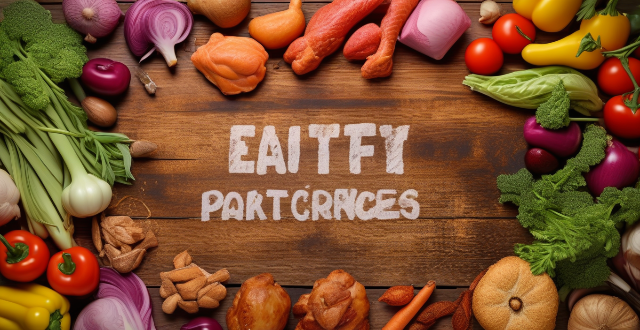
Can you suggest any easy-to-make lunch box recipes ?
The text provides a list of easy-to-make lunch box recipes. The first recipe is for grilled chicken and vegetable skewers, which involves marinating chicken breasts in a favorite sauce, cutting vegetables into large chunks, threading them onto skewers, and grilling until cooked through. The second recipe is for hummus and veggie wrap, which involves spreading hummus on a whole wheat tortilla, adding sliced cucumbers, carrots, and bell peppers, rolling up tightly, and slicing in half. The third recipe is for tuna salad lettuce wraps, which involves mixing canned tuna with mayo, lemon juice, and chopped celery, spooning the mixture onto lettuce leaves, and rolling up. The fourth recipe is for quinoa salad, which involves cooking quinoa according to package instructions, tossing with chopped tomatoes, cucumbers, feta cheese, and a simple vinaigrette, and packing in a container with pita chips or crackers. The fifth recipe is for egg salad sandwich, which involves hard boiling eggs, chopping them up, mixing with mayo, mustard, salt, and pepper, and serving on whole grain bread with lettuce and tomato. The sixth recipe is for Caprese salad, which involves slicing fresh mozzarella and tomatoes, drizzling with olive oil and balsamic vinegar, adding fresh basil leaves, and seasoning with salt and pepper. The seventh recipe is for turkey and cheese roll-ups, which involves laying out slices of turkey and cheese on a slice of bread, rolling up tightly, and slicing into bite-sized pieces. The eighth recipe is for Greek yogurt parfait, which involves layering Greek yogurt, granola, and fresh fruit in a jar or container, and topping with honey or maple syrup if desired. The ninth recipe is for black bean and corn salad, which involves rinsing and draining a can of black beans, mixing with canned corn, diced red onion, cherry tomatoes, and a lime vinaigrette, and serving chilled with tortilla chips or crackers. The tenth recipe is for avocado toast, which involves mashing an avocado with lime juice and salt, spreading on toasted whole grain bread, and topping with everything bagel seasoning or red pepper flakes for extra flavor.

How do I prepare a perfect grilled fish ?
Grilling fish is a delightful culinary experience that can be perfected with the right preparation and process. Here's a step-by-step guide to help you achieve perfection every time you fire up the grill for your favorite fish: 1. **Preparation** - **Choosing the Right Fish**: Opt for fresh fish, aim for fillets that are at least 1-inch thick, and choose types of fish like salmon, sea bass, and swordfish that are great for grilling due to their natural fat content. - **Marination**: Decide on the flavor profile you want, marinate the fish for at least 30 minutes to an hour in the refrigerator, but be cautious not to leave it too long as the acid in the marinade can start to cook the fish. - **Grill Prep**: Ensure your grill is clean to avoid any unwanted flavors and lightly oil the grates to prevent sticking. 2. **Grilling Process** - **Preheating the Grill**: Preheat the grill to medium-high heat, ideal temperature range between 375°F to 450°F (190°C to 230°C). - **Cooking the Fish**: Place the fish skin side down on the grill, flip the fish only once, and use a wide spatula to carefully flip and remove the fish without breaking it. - **Checking for Doneness**: The flesh should turn from translucent to opaque and give a gentle poke; it should flake easily with a fork. 3. **Serving Suggestions** - **Lemon Wedges**: Serve with wedges of lemon to add a fresh citrus note. - **Herb Sauce**: Pair with a simple herb sauce or compound butter. - **Side Dishes**: Consider serving with grilled vegetables, a fresh salad, or roasted potatoes. By following these steps, you will be able to prepare a perfect grilled fish that is sure to impress your guests or simply satisfy your own cravings for a delicious meal. Enjoy the process and savor the flavor!

Do hybrid cars produce less pollution than traditional gasoline cars ?
Hybrid cars generally produce less pollution than traditional gasoline cars, but the comparison is not straightforward and various factors must be taken into account.

How much energy does a zinc-carbon battery produce ?
The energy production of a zinc-carbon battery is determined by factors such as its size, voltage, and capacity. The process involves a chemical reaction between zinc and manganese dioxide, where larger batteries typically yield higher energy output due to more reacting material. The nominal voltage of a standard zinc-carbon battery stands at 1.5 volts, and the total energy can be calculated by multiplying this voltage with the current over time. Capacity, measured in ampere-hours (Ah), represents the maximum charge a battery can deliver. For instance, an AA-sized zinc-carbon battery with a 0.8 Ah capacity can produce approximately 1.2 watt-hours or 0.0012 kilowatt-hours of energy under ideal conditions.

How do electric cars compare to hybrid cars ?
Electric cars run solely on electricity and produce zero emissions, while hybrid cars combine a gasoline engine with an electric motor for improved fuel efficiency. Electric cars offer environmental benefits and lower operating costs but have limited range and long charging times. Hybrids provide a balance between gasoline-powered vehicles and electric cars, with improved fuel efficiency and no range limitations but still rely on gasoline and produce emissions. The choice between the two often depends on individual needs and preferences.

What are the alternatives to fossil fuels for energy production ?
The article discusses various alternatives to fossil fuels for energy production, including solar energy, wind energy, hydroelectric power, geothermal energy, biomass energy, and nuclear energy. It explains the working principles of each alternative and their advantages and disadvantages. The main advantage of these alternatives is that they produce clean energy with minimal greenhouse gas emissions, reducing the impact on the environment and climate change. However, some of them require significant investment and infrastructure development, while others have safety concerns or limited availability. Overall, the article highlights the potential of these alternatives in providing sustainable and reliable sources of energy for the future.

Is organic food healthier than non-organic food ?
The debate over whether organic food is healthier than non-organic food has been ongoing for decades. While some argue that organic food offers more nutritional benefits and is better for the environment, others believe that the differences are negligible and that non-organic food can be just as healthy. In this article, we will explore both sides of the argument and try to answer the question: is organic food healthier than non-organic food? Arguments in favor of organic food include nutritional benefits, pesticide reduction, and environmental impact. Organic farming practices focus on building healthy soil and growing strong plants, which results in produce that is richer in nutrients like vitamins, minerals, and antioxidants. Additionally, organic food is grown without the use of synthetic pesticides and fertilizers, reducing the risk of harmful chemicals ending up in our food supply. Finally, organic farming practices promote biodiversity, reduce pollution, and help preserve natural resources. Arguments against organic food include minimal nutritional differences, low pesticide residues, and higher cost. While some studies have found that organic food is more nutritious than non-organic food, other research suggests that the differences are minimal. The levels of pesticides found in non-organic produce are generally well below what is considered safe by regulatory agencies, and washing produce thoroughly can further reduce pesticide residues. However, one of the biggest drawbacks of organic food is its higher cost compared to non-organic options. Ultimately, the decision of whether to choose organic or non-organic food depends on personal preference and individual circumstances. If you prioritize nutrition, reducing your exposure to pesticides, and supporting environmentally friendly farming practices, then organic food may be the way to go. However, if you are concerned about cost or believe that the nutritional differences between organic and non-organic food are minimal, then non-organic options may be suitable for you.
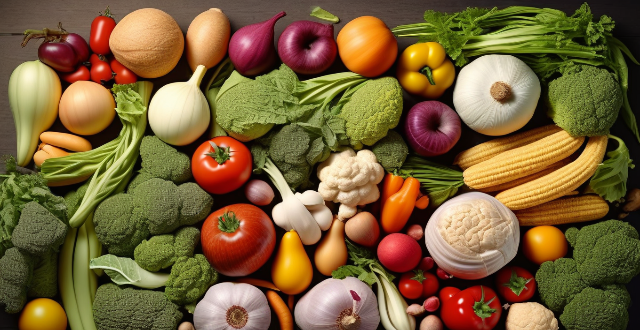
What are the best sources for buying organic food ?
The article discusses various sources for buying organic food, including farmers markets, online stores, health food stores, and community supported agriculture (CSA) programs. Each option has its own set of benefits and drawbacks, such as freshness, convenience, selection, cost, and support for local agriculture. The article emphasizes the importance of making healthy choices for oneself and family by choosing organic food.

How has 3D printing technology changed the way we design and produce sports equipment ?
3D printing technology has revolutionized the sports equipment industry by enabling customization, rapid prototyping, complex designs, and on-demand production. This innovation benefits athletes with personalized gear, faster design cycles, optimized performance, and sustainable practices.

What are the most reliable online grocery shopping platforms ?
This article discusses some of the most reliable online grocery shopping platforms based on their reputation, customer service, and delivery options. The top platforms include Amazon Fresh, Walmart Grocery, Instacart, Peapod, and Shipt. These platforms offer a wide range of products and convenient delivery services, making them excellent choices for online grocery shopping.
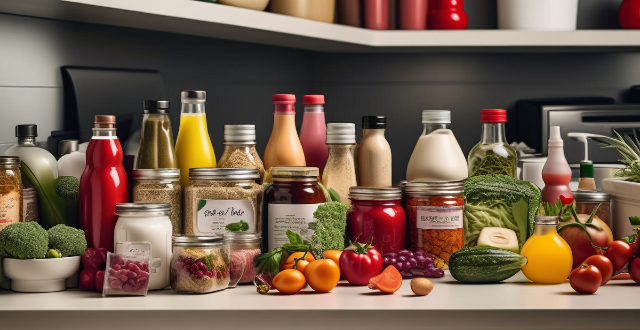
How can I reduce food waste in my kitchen ?
To reduce food waste in your kitchen, you can plan meals ahead of shopping, shop smart by making a list and buying fresh produce, store foods properly using airtight containers, understand expiration dates, preserve food through techniques like freezing and dehydrating, get creative with leftovers, practice portion control, and educate yourself on the environmental impact of food waste.

What role do community gardens play in city greening efforts ?
Community gardens play a significant role in city greening efforts by providing environmental, social, economic, and urban planning benefits. These gardens improve air quality, enhance biodiversity, and promote soil health. They also foster community building, offer educational opportunities, and contribute to health promotion. Economically, community gardens provide food security and create job opportunities. Integrated into urban planning, they beautify cities and promote sustainable development. Overall, community gardens are vital for ecological health and improving residents' quality of life.

How can I support local and organic farming ?
Supporting local and organic farming is crucial for the environment, sustainable agriculture, and community development. To contribute, you can buy local and organic products, volunteer or participate in farming activities, and educate yourself and others about sustainable practices. By making informed choices, you can make a significant impact on supporting local and organic farming.

What are the essential items to include in a grocery shopping list ?
When creating a grocery shopping list, it's important to consider your dietary needs, preferences, and any specific recipes you plan to make during the week. Here are some essential items to include in your list: - Fresh produce like fruits, vegetables, herbs & spices - Meat & dairy products such as chicken, beef, milk, cheese, yogurt, eggs, etc. - Grains & legumes including rice, pasta, quinoa, bread, beans, lentils, chickpeas, etc. - Pantry staples like oils & vinegars, baking supplies, snacks - Beverages like water, coffee & tea, juices & sodas - Personal care & household items like toiletries and cleaning supplies Customize your list based on your personal preferences and dietary restrictions. Happy shopping!
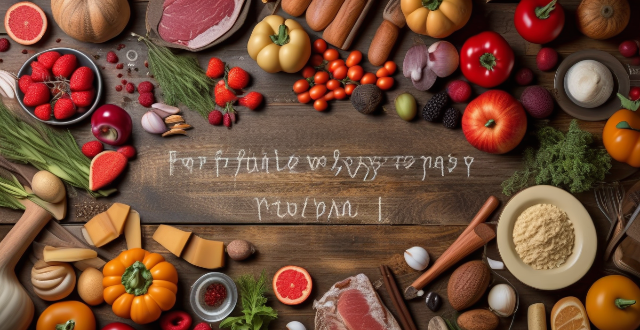
How can I make a family dinner more budget-friendly ?
The article provides various tips for making family dinners more budget-friendly, including meal planning, buying in bulk, cooking from scratch, shopping seasonally, using leftovers creatively, avoiding impulse buys, and sharing meals with friends or family. By following these suggestions, families can save money while still enjoying tasty and nutritious home-cooked meals.
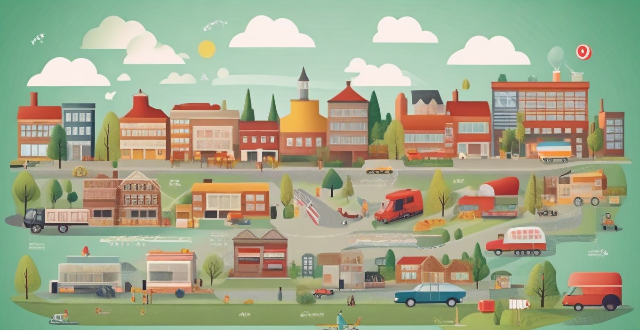
How can urban planning and design contribute to enhancing urban food security under changing climatic conditions ?
The text discusses the importance of urban planning and design in enhancing food security in cities, especially under changing climatic conditions. It outlines key strategies such as promoting urban agriculture, sustainable land use planning, improving access to healthy food options, supporting local food production and consumption, and fostering innovation and collaboration. These strategies aim to create resilient and self-sufficient urban environments that can adapt to climate change while ensuring food security for all residents.